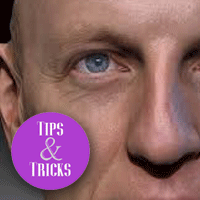
welcome
3D Texturing is the foundation of the look and feels the development of 3D animation. Meshes would be bland and dull and lifeless without colors and textures. In texturing a few tips and tricks can make your textures turn out very great and your models eccentric. Here are a couple of them
- UV Texture Editor
Using a UV texture editor to effectively unwrap your 3D models is very essential in texturing. A discreet UV map would go a long way in helping you produce a proportional textured model. Breaking your models into UV maps based on their compartments and shapes would ensure that there are no overlapping texture or misaligned textures or even textures that are cropped or mismatched. If you think about how you will texture your model while unwrapping, you would in most cases come up with a proportional texture. - Using a Base high-quality Texture
Starting with a base texture is important. This base texture can then be edited for modification in Photoshop, rather than just slapping on a couple of textures on a model which might eventually be out of sync. The importance of sharpening textures cannot be overemphasized. Make a copy of your entire texture, paste it at the top of the layer stack, and do an Unsharp mask pass on that layer. This way you don’t mess up your original texture. The High Pass filter in Photoshop which is under the Filter > Other Menu should be used in texturing: sharpening photo textures that are a little soft or need more detail enhancement, and for creating quick bump maps. If you intend to use photos as model textures, then these photos have to be of very high resolution and quality. It is easier to work with a high-resolution photo when modifying textures than working with a poor quality photo. - Use Opacity brushes when painting in Photoshop
If a texture has to be adjusted on Photoshop, use the opacity brushes to create a tone buildup which can be undone in stages. This would give you the luxury of going through the tone stages of an image adjustment and might eventually provide you with more options. - Use Ambient Occlusion maps.
Ambient Occlusion maps are not only important for rendering, but they are also very important for texture. AO maps are a great way to give your texture that extra bit of depth, and it’ll make your model look less like CG, and more like something from real life - Use other important Render passes.
Other important render passes like reflection and specularity. Blur your reflections, Unless you are texturing a perfectly clean mirror, most reflective surfaces have a certain degree of blurring to them. Even just slight blurring can help to get rid of that nasty CG look, also use the specular blooms in which bright highlights seem to glow. Also take into consideration, the Fresnel effect (the observation that the amount of reflectance you see on a surface depends on the viewing angle.)





0 Responses on Tips and Tricks in 3D texturing"